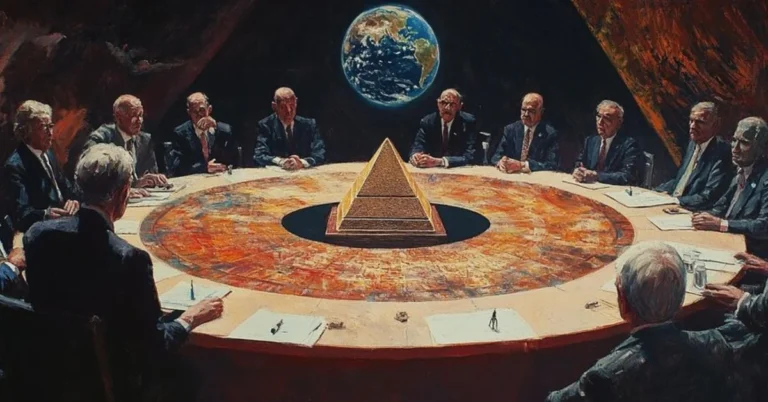MH370 Malaysia Airlines on Google Maps: The Truth Behind the Speculation
The disappearance of Malaysia Airlines Flight MH370 in March 2014 remains one of the most baffling mysteries in aviation history. As the aircraft vanished en route from Kuala Lumpur to Beijing with 239 people on board, including 227 passengers and 12 crew members, all of whom were presumed dead, search efforts spanning years and vast areas of the Indian Ocean have failed to locate the plane. Amidst the uncertainty, various theories have emerged, some of which suggest that satellite imagery, like Google Maps, could help solve the mystery.
Recently, claims about locating MH370’s wreckage on mapping platforms such as Google Maps have surfaced. Although these theories attract significant attention, they are often met with skepticism due to the lack of concrete evidence. This article delves into these claims of Malaysia Airlines Flight MH370 wreckage, examines the credibility of such reports, and explains why satellite mapping services are unlikely to solve the mystery.
MH370 and Google Maps: Where Did the Rumors Begin?
In the years following the disappearance of Flight MH370, numerous theories emerged about the possible location of the aircraft. A notable claim came from British technology expert Ian Wilson, who stated in 2018 that he had spotted what appeared to be wreckage in a remote part of the Cambodian jungle using Google Maps. Wilson’s assertion was based on the dimensions of the object, which he argued closely resembled a Boeing 777, the type of aircraft involved in the MH370 tragedy.
Wilson’s claims quickly caught the attention of the media, sparking renewed interest in the search for MH370. The idea that Google Maps could hold the key to solving the mystery intrigued many, particularly those following the search efforts closely. However, as the claim was investigated further, it became clear that the evidence was far from conclusive.
Can Google Maps Help Find MH370?
While mapping tools like Google Maps provide highly detailed satellite imagery, they are not designed to locate missing aircraft. Satellite images used by these platforms are often captured long after an event has occurred, and the resolution may not be fine enough to distinguish between debris and natural features such as trees or rocks. Additionally, the absence of real-time updates means that any object identified might have been present for years, or it could simply be an error in interpretation.
The search for MH370 has been conducted using far more specialized technology, such as underwater drones and sonar mapping, which are much better suited for locating wreckage on the ocean floor. To date, no significant evidence of the plane’s location has been found using Google Maps or similar platforms.
What Do Experts Say About Google Maps Theories?
Despite the intrigue surrounding claims of the plane’s location via Google Maps, aviation experts and authorities remain skeptical. Several reasons contribute to this skepticism:
Misinterpretation of Satellite Images
Experts warn that objects visible in satellite images can easily be misidentified. The resolution limitations of services like Google Maps can cause objects to appear differently than they would in real life. Rocks, shadows, and vegetation can sometimes take on shapes that resemble aircraft parts, leading to confusion. Many of these claims, including Wilson’s, have been dismissed due to a lack of supporting evidence from ground investigations.
Previous Ground Searches
After Wilson’s claim, investigations were conducted in the area he identified. However, no physical evidence of the wreckage was found on the ground. Similar claims in the past, whether focused on land or ocean locations, have also been investigated with no success, further casting doubt on the validity of such sightings.
Focus on Ocean Search Zones
Most experts believe that MH370 crashed in the southern Indian Ocean, based on satellite data from the plane’s communication system, which pinged off satellites for hours after it disappeared from radar. As a result, searches have concentrated in this vast area, far from the Cambodian jungle or any land-based location. The official search efforts, led by countries like Australia and Malaysia, have not found any evidence to suggest that the plane ended up on land.
False Leads and Hoaxes: The Challenge of Online Speculation
Over the years, the mystery of MH370 has given rise to numerous conspiracy theories and hoaxes. In some cases, individuals have claimed to spot the plane on various satellite platforms, fueling rumors that only complicate the ongoing investigation. These claims, though widely shared online, typically lack credibility and do not align with the data collected by official investigations.
It is important to note that finding wreckage on Google Maps or other similar tools is highly unlikely, given the complexity of the search and the location where the plane is believed to have crashed. Online speculation, while understandable given the emotional nature of the tragedy, often leads to misinformation rather than answers.
Ongoing Search Efforts for MH370
Despite the challenges, the search for Flight MH370 continues to be a focus for both governments and private companies. While the official search was suspended in 2017, new technologies and discoveries in ocean mapping have kept the hope alive. For example, Ocean Infinity, a private exploration company, conducted its own search of the southern Indian Ocean using advanced autonomous underwater vehicles (AUVs), though no definitive wreckage has been found.
The Malaysian government has stated that they are open to resuming the search if credible evidence emerges, with discussions ongoing about future missions using a “no find, no fee” model.
Conclusion
The idea that Google Maps might help find Malaysia Airlines Flight MH370 is appealing, but it is not a practical solution to the ongoing mystery. While satellite imagery provides valuable tools for many purposes, the technology used by professional search teams—such as underwater drones and sonar—is far more suitable for this type of operation. Claims that the wreckage has been located using Google Maps should be approached with caution, as they often lead to dead ends. Until substantial evidence is discovered, the disappearance of MH370 remains one of aviation’s greatest unsolved mysteries.
FAQs:
Has the wreckage of MH370 been found using Google Maps?
No, there is no verified evidence that the wreckage of MH370 has been found through Google Maps. Claims suggesting the plane’s location on satellite imagery have been investigated and dismissed due to a lack of credible evidence.
Why do people claim they can see MH370 on Google Maps?
These claims often arise from misinterpretations of satellite images, where natural features may resemble aircraft parts. However, these sightings are not backed by solid evidence or ground investigations.
What is the current status of the MH370 search?
The official search was suspended in 2017, but private companies have continued exploring potential locations in the southern Indian Ocean. The Malaysian government is open to resuming the search if credible evidence is presented.
Why do experts focus on the southern Indian Ocean for the MH370 search?
Based on satellite data and the plane’s communication pings, experts believe that MH370 likely crashed into the southern Indian Ocean. Search efforts have focused on this region, which covers a vast and difficult-to-navigate area.
Can Google Maps be used for tracking lost aircraft?
Google Maps is not designed for tracking or locating lost aircraft. Specialized technology like sonar and underwater drones is far more effective for these types of search operations.







